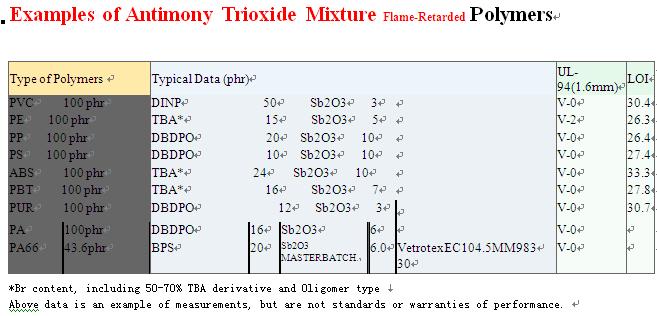It is also used as an additive in glass and ceramic products and as a catalyst in the chemical industry. Occupational exposure may occur during mining, processing and smelting of antimony ores, in glass and ceramics production, and during the manufacture and use of products containing antimony trioxide.
| SPECIFICATION OF ANTIMONY TRIOXIDE | |
| Sb2O3 | 99.5% MIN |
| Al2O3 /As | 0.06% MAX |
| PbO/Pb | 0.1% MAX |
| Fe2O3 /Fe | 0.006% MAX |
| Cu | 0.002% MAX |
| Se | 0.005% MAX |
| Whiteness | 95% MIN |
Features
- In flame retarding thermoplastics, the synergistic action between halogenated flame retardants and antimony trioxide is well known in the plastic industry.
- The Izod impact strength and translucency are two key properties that are diminished because of the particle size and pigmentation strength of antimony trioxide.
- The loss in translucency limits the range of available color choices because of the high loading required to offset the tinting effect of antimony trioxide.








0 comment:
Post a Comment